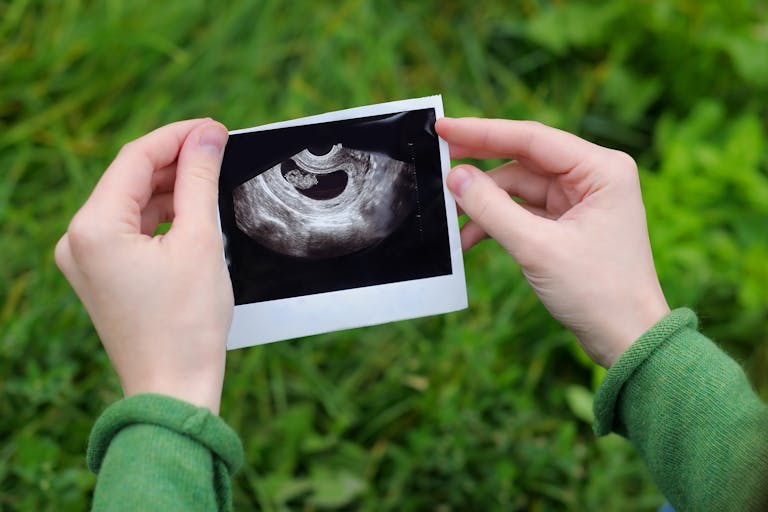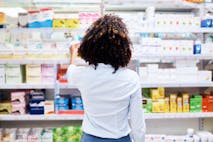
Study: Nearly half of women suffer moderate to high distress after abortion
Michael J. New
·
A former abortion nurse shares her responses to students’ questions about abortion
In a recent article in The Torch, nurse Cynthia Isabell, who once assisted in abortions, writes about how she talks to her students about the abortion issue. Students often ask her what she thinks about abortion. When she tells them she is pro-life, they usually ask her the same few questions.
The first question she says they ask her is, “When does life begin?”
She answers:
I respond with, ‘You know the answer to this question. How do you tell if something, such as a cell, is alive or not?’ The students answer correctly that ‘living cells grow and multiply.’ And so of course I must remind them of what they already know: that growth and multiplication is exactly what is happening after the egg and the sperm join to form the zygote. Within twenty-four hours of conception the zygote is dividing rapidly into many cells which will differentiate to form different parts of the human body.
Dead things do not do this. Dead cells do not replicate their DNA and multiply into more cells. They do not differentiate to become a brain, a heart, the liver, the skin, muscle and bone. Life begins at conception, when the fertilized egg begins to grow.
It is obvious, then, that the preborn child is alive.
The students then ask, “When can it be considered a human?”
She responds by asking the students:
‘What determines whether we are a human, rather than a bird or a zucchini?’ The answer to this is simple and they correctly reply that it is ‘our genetics, our DNA.’
Obviously, the preborn baby has human DNA. It does not have the DNA of a bird or rat. Isabell says:
When the egg and the sperm join, this is the beginning of a new human, with its own set of DNA which also includes hair color, eye color, skin tone, fingerprints, and a multitude of other individual characteristics. The baby is genetically different from the mother, having only half of the DNA coming from her, and half from the father; a distinct human being.
Isabell has now established that abortion kills a living human being.
At this point, though, the questions do not end. The students ask her why a woman shouldn’t be allowed to do whatever she wishes with her body.
Isabell’s answer is that it is not just the mother’s body involved in an abortion. The child has his or her own body. She points out that a fetus does not simply grow inside the mother like an internal organ. The placenta and umbilical cord must separate the baby from the mother. The placenta and umbilical cord, she says, are vital because the baby has a different circulatory system than the mother. The baby’s blood and the mother’s blood must never mix. If they do, serious complications can occur.
Article continues below
Dear Reader,
In 2026, Live Action is heading straight where the battle is fiercest: college campuses.
We have a bold initiative to establish 100 Live Action campus chapters within the next year, and your partnership will make it a success!
Your support today will help train and equip young leaders, bring Live Action’s educational content into academic environments, host on-campus events and debates, and empower students to challenge the pro-abortion status quo with truth and compassion.
Invest in pro-life grassroots outreach and cultural formation with your TRIPLED year-end gift!

Finally, the students often ask about whether abortion should be legal when a woman is raped.
To answer this common question, Isabell cites some statistics. According to research done by David C. Reardon, Ph.D., 70-80% of rape victims who become pregnant choose to give birth to their babies.
The study Isabell refers to is written about in the book Victims and Victors which collects the testimonies of women who became pregnant through rape or incest. These women either had their babies or aborted them. The book shows that while a substantial number of women who aborted had regrets, none of the women who carried to term wished they had aborted.
Isabell suggests some reasons why rape victims reject abortion:
[…Abortion] cannot undo a rape and erase the pain and trauma for the rape victim. Abortion is the ending of a human life, a life which is as much the child of its mother as it is of its father. It is an additional trauma for the woman[…]
Women who are pregnant from rape often choose to carry the pregnancy because they recognize that the baby is still their baby despite the circumstances of its conception. They also feel that having an abortion would be undoing the only positive thing (the baby) that resulted from the rape[…]
Additionally, many rape victims state that they do not want to punish an innocent baby because of the crime of the rapist. If they were to do that, they would feel like they were as bad as the rapist. Victims of rape already suffer from feelings of guilt and shame over what happened to them, and part of the healing process involves releasing those feelings and recognizing that they are not responsible for what someone else did to them. However, if they become pregnant from the rape and have an abortion, they are now burdened with actual rather than imagined guilt – actual guilt for having committed a crime against an innocent victim – which makes healing tremendously more difficult.
All of these reasons lead many women who are raped to carry their babies to term and either raise them or place them for adoption. Save the 1 shares stories from women who had their babies who were conceived in rape.
The last question students ask is whether abortion should be legal because it is needed to save the life of the mother. Isabell points out that only 1% of all abortion are done because of health risks to the mother. However, this statistic, she says, is unreliable because it includes ectopic pregnancies. In an ectopic or tubal pregnancy, the fertilized egg implants and begins to develop in one of the Fallopian tubes or elsewhere in the abdomen instead of the womb. When the baby reaches a certain size, the tube ruptures, killing the baby and causing the mother to bleed internally. A woman can die from an ectopic pregnancy as well. While in rare cases, children can survive an ectopic pregnancy depending on their location in the abdomen, most won’t. Many pro-lifers do not consider surgery to remove the baby and treat the ectopic pregnancy as an abortion, as the child was never going to survive and is not actively killed.

In addition, the 1% statistic includes abortions done because of the mother’s mental health. In these abortions, the mother claims that she would be adversely affected by the stress of having a baby. In reality, abortions done for mental health reasons are not needed to save the life of the mother. Isabell cites the Association of Pro-Life Physicians, saying that the number of abortions that must be performed to save a woman’s life are zero.
Isabell says that even if this was not the case:
The argument that all abortions should be legal anytime for any reason because sometimes it is performed to save a mother’s life does not hold up under further scrutiny. If you say that sometimes shooting a person can save the life of another, as in self-defense, can you then conclude that it should be okay to shoot people anytime, for any reason?
Isabell’s article gives answers to the questions most commonly asked by pro-choicers. Her answers make the case that abortion should not be legal.

Note: A medication abortion (the type using abortion pills) can sometimes be reversed if a mother changes her mind. For more information, see Abortion Pill Reversal.
Live Action News is pro-life news and commentary from a pro-life perspective.
Contact editor@liveaction.org for questions, corrections, or if you are seeking permission to reprint any Live Action News content.
Guest Articles: To submit a guest article to Live Action News, email editor@liveaction.org with an attached Word document of 800-1000 words. Please also attach any photos relevant to your submission if applicable. If your submission is accepted for publication, you will be notified within three weeks. Guest articles are not compensated (see our Open License Agreement). Thank you for your interest in Live Action News!

Michael J. New
·
Analysis
Cassy Cooke
·
Analysis
Cassy Cooke
·
Analysis
Bridget Sielicki
·
Analysis
Cassy Cooke
·
Analysis
Cassy Cooke
·
Guest Column
Sarah Terzo
·
Abortion Pill
Sarah Terzo
·
Guest Column
Sarah Terzo
·
Guest Column
Sarah Terzo
·
Guest Column
Sarah Terzo
·